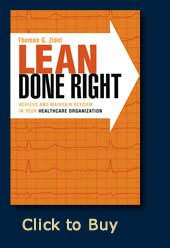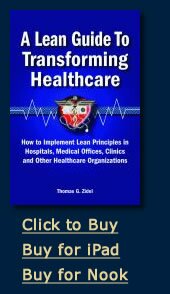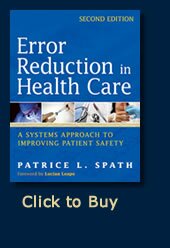|
 Your healthcare organization cannot afford to waste time, money, or resources on an improper Lean implementation. You want to create a culture of continuous improvement, not a regime of fire-fighting tools that address problem areas but have short-lived results. Your healthcare organization cannot afford to waste time, money, or resources on an improper Lean implementation. You want to create a culture of continuous improvement, not a regime of fire-fighting tools that address problem areas but have short-lived results.

 This book is an implementation manual for lean tools and principles in a healthcare environment. Lean is a growth strategy, a survival strategy, and an improvement strategy. The goal of lean is, first and foremost, to provide value to the patient/customer, and in so doing eliminate the delays, overcrowding, and frustration associated with the existing care delivery system. Lean creates a better working environment where what is supposed to happen does happen. On time, every time. It allows clinicians to spend more of their time caring for patients and improves the quality of care these patients receive. A lean organization values its employees and encourages their involvement in organizational initiatives which, in turn, sustains hospital-wide quality improvements. The opportunities for lean in healthcare are limitless. This book is an implementation manual for lean tools and principles in a healthcare environment. Lean is a growth strategy, a survival strategy, and an improvement strategy. The goal of lean is, first and foremost, to provide value to the patient/customer, and in so doing eliminate the delays, overcrowding, and frustration associated with the existing care delivery system. Lean creates a better working environment where what is supposed to happen does happen. On time, every time. It allows clinicians to spend more of their time caring for patients and improves the quality of care these patients receive. A lean organization values its employees and encourages their involvement in organizational initiatives which, in turn, sustains hospital-wide quality improvements. The opportunities for lean in healthcare are limitless.
 Error Reduction in Health Care offers a step-by-step guide for implementing the recommendations of the Institute of Medicine to reduce the frequency of errors in health care services and to mitigate the impact of errors when they do occur. Error Reduction in Health Care offers a step-by-step guide for implementing the recommendations of the Institute of Medicine to reduce the frequency of errors in health care services and to mitigate the impact of errors when they do occur.
With contributions from Danielle Lavallee, of Lean Hospitals, LLC Error Reduction in Health Care provides information on analyzing accidents and shows how systematic methods can be used to understand hazards before accidents occur. In Chapter 12, Danielle defines how to improve patient safety utilizing lean techniques.
|